Mistakes to Avoid in Hairline Design Before Your Transplant
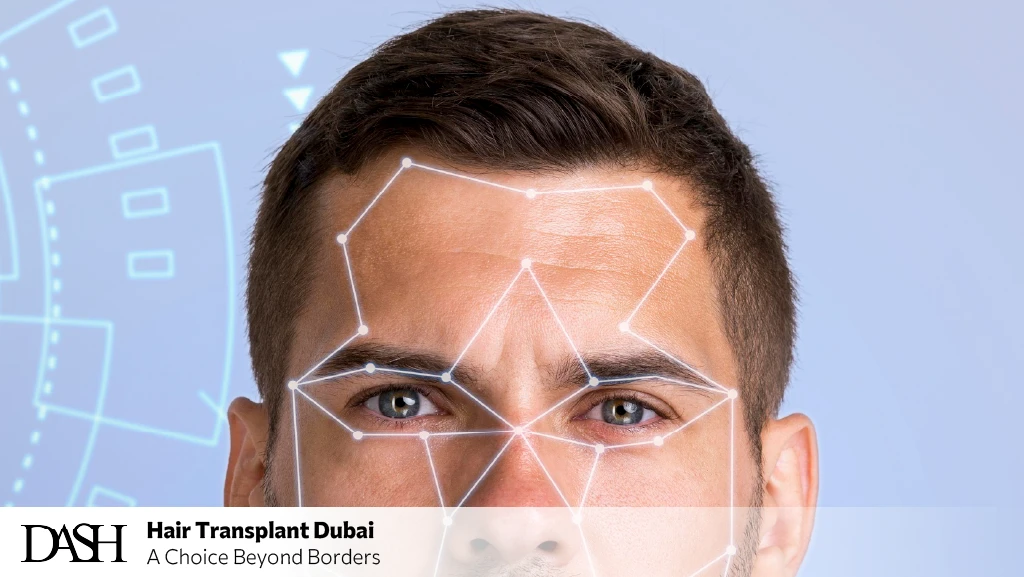
When it comes to hair transplants, hairline design might seem like a minor detail—but it’s actually one of the most important parts of the process. A poorly planned hairline can make even the most advanced transplant techniques look unnatural. It can throw off the balance of your face, waste precious grafts, and sometimes even require correction in the future.
In this article, we’ll go over the most common mistakes people make when designing their hairline before surgery. Whether you’re just starting your research or already preparing for your procedure, knowing what not to do can be just as valuable as knowing the right steps to take. With the right planning and guidance, you can avoid regret and achieve results that truly look and feel natural.
Why Hairline Design Matters in Hair Transplant
The hairline isn’t just where your new hair starts—it’s the part that frames your entire face. It sets the tone for how natural and balanced your hair transplant will look. A well-designed hairline blends seamlessly with your existing features, enhances your facial proportions, and gives you that refreshed, youthful appearance without looking artificial.
On the flip side, a poorly designed hairline can draw the wrong kind of attention. It might be too straight, too low, or completely ignore how your natural hair used to grow. These small mistakes can make the final result look unnatural—or worse, make it obvious that you’ve had work done.
That’s why hairline design isn’t something to rush through or leave entirely up to chance. It’s both an art and a science, and getting it right takes careful planning, experience, and a deep understanding of facial harmony. The goal isn’t just to restore lost hair—it’s to recreate what looks and feels right for you.
Common Hairline Design Mistakes and Their Impact
1️⃣ Hairline placed too low: Makes the forehead look unnaturally small and can create a harsh or “boxed-in” appearance, especially as you age.
2️⃣ Perfectly straight hairline: While it may seem clean and tidy, it often looks artificial. Natural hairlines usually have soft curves and slight asymmetry.
3️⃣ Ignoring natural hair direction and growth pattern: If grafts aren’t placed in the same direction as your natural hair, they can grow at awkward angles and be hard to style.
4️⃣ Overly dense or overly sparse design: Packing too many grafts can look unnatural; too few will leave the result underwhelming and thin.
5️⃣ Not planning for future hair loss: A design that looks great now might look odd in 5–10 years if you lose more hair around it. Future-proofing is key.
6️⃣ Design doesn’t match facial proportions: A hairline that’s too high or too low can disrupt the harmony of your face, making features look disproportionate.
7️⃣ Trying to replicate someone else’s hairline: Copying a celebrity or influencer rarely works because every face, head shape, and hair texture is unique.
8️⃣ Excessive detailing (zig-zags, peaks, etc.): Too much artificial texture can look over-designed and unnatural up close.
9️⃣ Letting the clinic decide everything without your input: You should be part of the design process—otherwise, the final result might not align with your personal goals.
🔟 Working with an inexperienced practitioner: Even with the best tools, if the person designing your hairline lacks aesthetic judgment, the outcome can look unnatural or even require corrective surgery later.
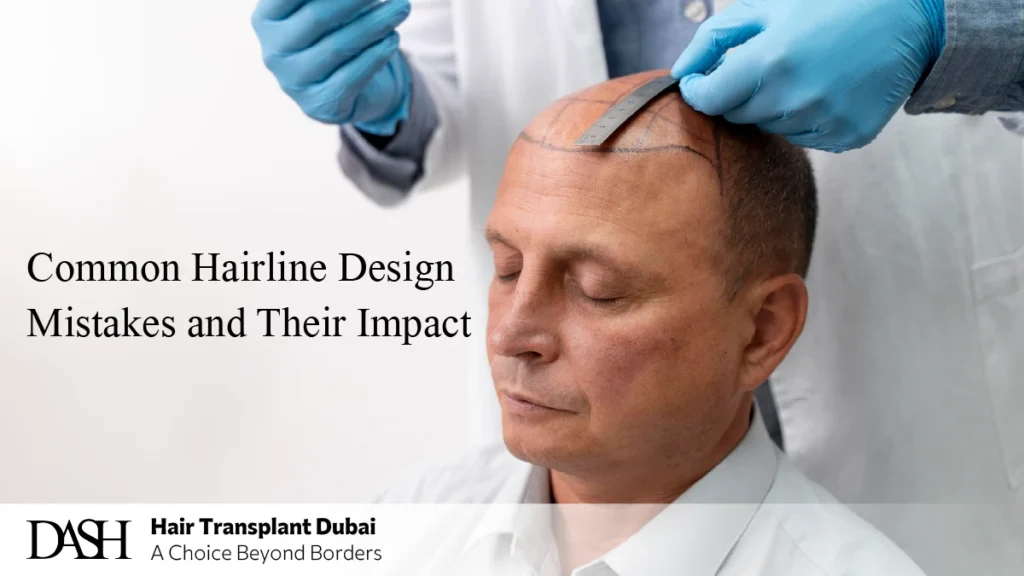
Ignoring Natural Hair Growth Patterns
One of the biggest mistakes in hairline design is ignoring how your hair naturally grows. Your original hairline wasn’t just a line it was a gradual transition with specific angles, directions, and textures that made it look effortless and natural. Replicating that pattern is essential for a believable result.
When transplanted hairs don’t follow the natural direction of growth, the outcome can look awkward and even difficult to manage. For example, frontal hairs typically grow forward at a slight angle, not straight up or sideways. If grafts are placed incorrectly, they may stick out or fall flat, making styling a constant struggle and drawing attention to the fact that you’ve had a transplant.
Every person’s hair has a unique flow, swirl, and density pattern. This is especially true around the temples and edges of the hairline, where the orientation becomes more intricate. A skilled surgeon doesn’t just place hairs randomly—they carefully mimic the original growth to ensure a smooth and realistic blend.
Ignoring these growth patterns can result in what many people call the “doll hair effect”—where transplanted hair looks too uniform, too vertical, or simply “off.” It breaks the illusion of natural hair and can make an otherwise good transplant look artificial.
Ultimately, the goal isn’t just to fill in a bald area. It’s to recreate the natural character and movement of your original hair something that requires attention to detail, experience, and a personalized approach.
Choosing an Unnatural Hairline Shape
Designing a hairline isn’t just about filling space, it’s about creating a natural frame for your face. One of the most common mistakes patients (and sometimes even clinics) make is choosing a hairline shape that looks unnatural or doesn’t suit the person’s facial structure. The result? A transplant that feels out of place, even if the technical work was done well.
An unnatural shape might mean a hairline that’s too straight, too sharp at the temples, or designed with angles that don’t occur naturally in human hairlines. While it may look symmetrical on paper, the human face isn’t perfectly symmetrical—and forcing that kind of perfection into your hairline can make the final result look stiff or artificial.
Some patients ask for a hairline that mimics someone they admire a celebrity, influencer, or even a version of their younger self. But what worked for them, or in a different time of your life, might not complement your current bone structure, facial features, or even your hair type. A good hairline is personalized, not copied.
In contrast, a natural-looking hairline has subtle irregularities. It softens as it moves outward, especially around the temples. It respects your face’s proportions and age. It doesn’t scream “I had a transplant” instead, it whispers, “this just looks right.”
The best surgeons know that less can often be more. Instead of forcing a bold, dense, or overly youthful shape, they design a hairline that will not only look great today but also age gracefully with you.
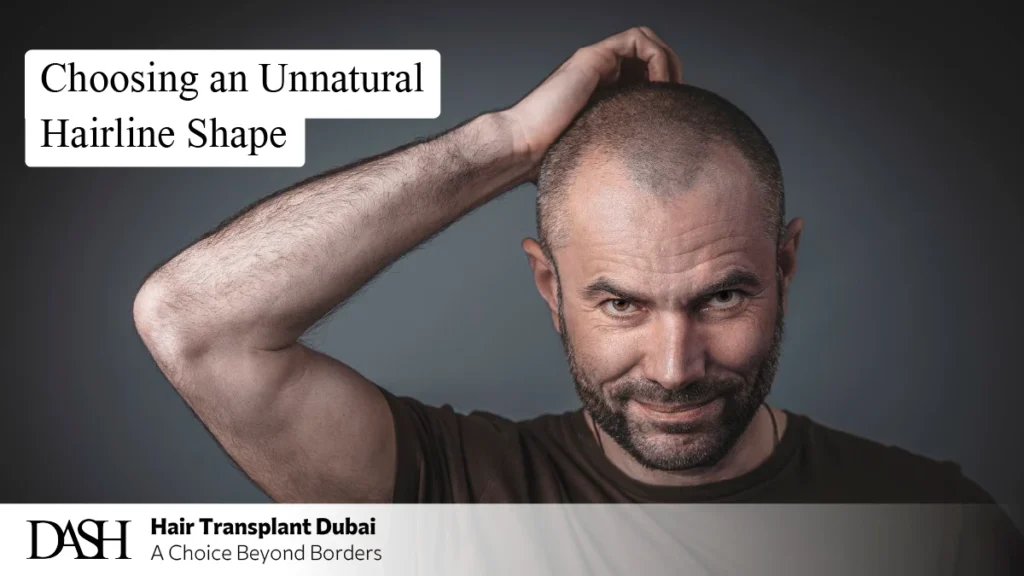
Placing the Hairline Too Low or Too High
Finding the right position for your new hairline is a delicate balancing act. Set it too low, and it can make your forehead look cramped and unnatural—set it too high, and you risk losing the youthful frame that gives your face definition. Unfortunately, both of these mistakes are more common than you might think.
A hairline that’s placed too low might seem appealing at first—it gives the impression of fullness and youth. But over time, it can look artificial, especially as the rest of your face ages. A low hairline can also limit your styling options and make your features feel crowded, drawing attention for the wrong reasons. Worse, it may use up too many grafts early on, leaving fewer resources if you need additional transplants later in life.
On the other hand, a hairline that’s too high can give the opposite effect. It might make you appear older than you are, and even after a successful transplant, the results can feel underwhelming. Patients often report feeling like “not enough changed” or that their new hair doesn’t provide the youthful boost they were hoping for.
There’s no one-size-fits-all formula when it comes to hairline height. The ideal placement depends on a variety of factors, including your age, facial proportions, natural hairline history, and long-term hair loss pattern. An experienced specialist will take all of these into account to find the sweet spot—a hairline that looks completely natural, complements your face, and still looks great years down the line.
Overfilling or Underfilling the Hairline
💠 Overpacking grafts too closely
Cramming too many grafts into a small area can create an unnaturally dense look and may compromise blood flow, leading to poor graft survival.
💠 Creating a harsh or overly defined hairline
A hairline that looks like a sharp edge lacks the softness and irregularity of a natural one. Real hairlines fade in gradually, not abruptly.
💠 Not using enough grafts in the front zone
Underfilling the frontal area results in a thin, patchy look that fails to provide adequate coverage or aesthetic improvement.
💠 Skipping natural density transitions
A flat, uniform density across the hairline can look artificial. A realistic design gradually increases in density from front to back.
💠 Using multi-hair grafts at the very front
Placing grafts with 2–3 hairs at the hairline edge can make the front look harsh or “pluggy.” Only single-hair grafts should be used here.
💠 Trying to achieve full density in one session
Pushing too hard for maximum density in a single session can lead to overcrowding, shock loss, or poor healing. Sometimes, less is more.
💠 Ignoring the temples or side zones
A well-filled midline without matching the temples can look incomplete or asymmetrical. Balanced framing is essential.
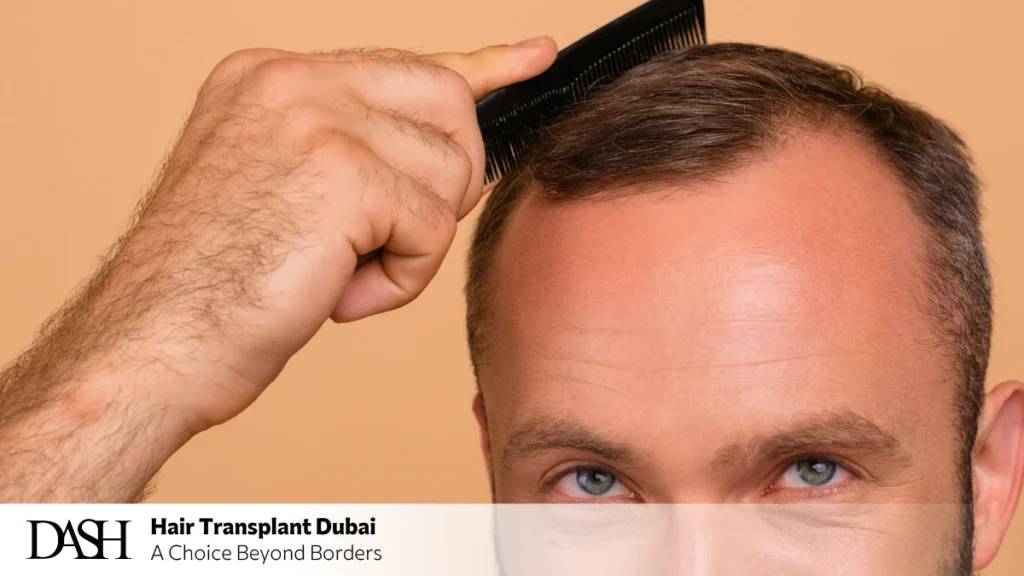
Why Ignoring Your Age Is One of the Worst Hairline Design Mistakes
Designing a hairline without taking your age into account is one of the most common—and costly—mistakes people make before their hair transplant. While it’s tempting to aim for a youthful, low hairline, copying the look you had in your early twenties often backfires if you’re no longer in that stage of life.
Your face changes with age so should your hairline. A hairline that’s too low or too dense for your current age can look unnatural and out of sync with the rest of your features. Worse, it can draw attention for the wrong reasons, making it obvious that you’ve had work done.
But the issue isn’t just about looks. Age also matters because hair loss is usually a progressive condition. If you design a youthful hairline without considering how your hair may thin in the years ahead, you risk ending up with an isolated patch of dense hair surrounded by balding areas. This not only looks awkward but also makes future corrections more complicated and sometimes impossible due to limited donor hair.
A well-planned hairline should age with you, maintaining a natural appearance both now and in the future. The best surgeons take into account your current level of hair loss, your family history, and your long-term goals to create a design that’s both realistic and sustainable.
Remember: a good hairline doesn’t just look good today it still looks good five, ten, even twenty years from now.
Relying on Inexperienced or Non-Specialized Clinics
No matter how well you plan your hairline design, the final outcome depends on who’s executing it. One of the most damaging hairline design mistakes is trusting the wrong clinic—especially one that lacks experience, artistic skill, or specialization in hair restoration.
Hair transplant surgery isn’t just a technical procedure; it’s a blend of science and artistry. Inexperienced providers may not fully understand how to create a hairline that fits your facial structure, mimics natural growth patterns, or takes your future hair loss into account. As a result, you could end up with a hairline that looks too sharp, too flat, asymmetrical, or just plain fake.
Non-specialized clinics might also rely too heavily on technicians or use outdated methods. In some places, your consultation may be with a doctor—but the actual design and graft placement are handled by unqualified staff. That’s a big red flag.
Working with the wrong clinic doesn’t just risk a poor aesthetic result—it can also waste valuable donor hair, limit your options for future transplants, and lead to emotional and financial regret. Fixing a bad transplant is possible, but it’s much more difficult (and expensive) than getting it right the first time.
Bottom line? Choose a clinic that specializes in hair restoration, has proven experience with natural hairline design, and involves you in the planning process. It’s your face. Don’t settle for shortcuts.
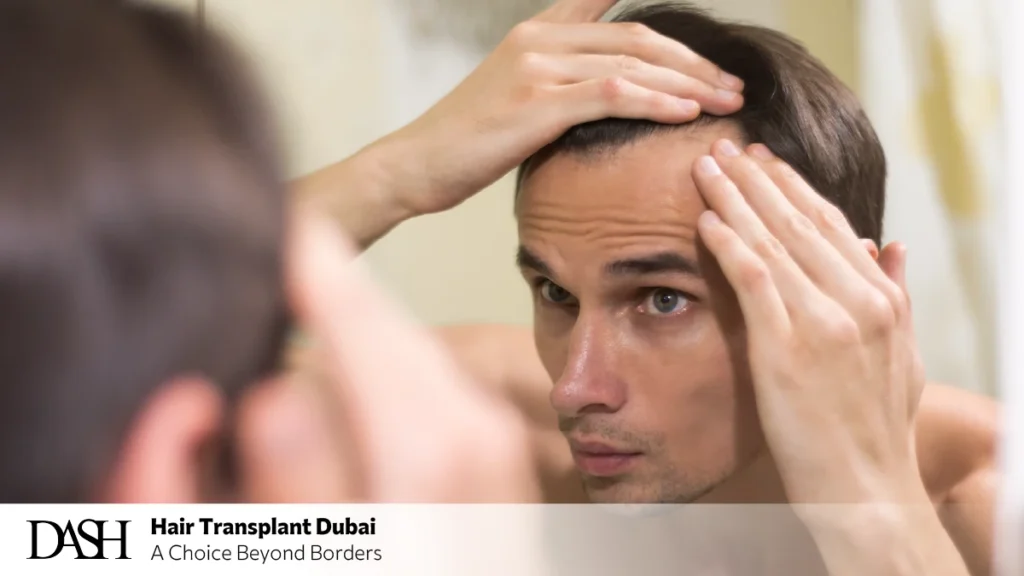
How to Ensure the Perfect Hairline Design
🔰 Work with a qualified, hair transplant–focused specialist: Choose a clinic with a proven track record in natural hairline design. Look at real patient results—not just before-and-afters, but long-term outcomes.
🔰 Make sure the design matches your facial proportions: A good hairline frames your face. It should complement your forehead size, bone structure, and overall symmetry—not fight against them.
🔰 Consider your age and future hair loss pattern: Design a hairline that still looks natural 5–10 years from now. Think ahead, not just in the short term.
🔰 Ask for a personalized design, not a generic template: Avoid “cookie-cutter” hairlines. Your design should be based on your unique features, hair characteristics, and goals.
🔰 Review the hair growth angle and direction plan: Ask how the clinic ensures grafts are placed in a way that mimics your natural hair growth pattern—this affects styling and realism.
🔰 Insist on using single-hair grafts at the front line: The edge of the hairline should be soft and natural-looking. Multi-hair grafts belong behind—not right at the front.
🔰 Be involved in the design process: Don’t let the clinic decide everything without your input. Ask to see a sketch or outline of the proposed hairline and give feedback.
🔰 Prioritize naturalness over density: A perfectly designed, realistic hairline is more important than trying to squeeze in as many hairs as possible.
🔰 Understand the limits of your donor area: Know how many grafts are available and plan accordingly. Don’t sacrifice long-term flexibility for short-term fullness.
🔰 Don’t rush—take your time to plan: A well-thought-out hairline is the foundation of your transplant’s success. Take the time to get it right.
Final Thoughts: Plan Smart, Avoid Regret
Hairline design isn’t just a detail—it’s the foundation of your hair transplant result. When done right, it creates a natural, balanced, and long-lasting improvement in your appearance. But when rushed or poorly planned, it can lead to disappointment, wasted grafts, and costly revisions.
The most successful hair transplants don’t happen by accident. They’re the result of careful planning, collaboration with an experienced specialist, and a deep understanding of your unique facial structure and future hair loss patterns.
By avoiding common hairline design mistakes and taking an active role in your treatment plan, you can dramatically increase your chances of a satisfying and natural-looking result. Don’t be afraid to ask questions. Take your time choosing the right clinic. And above all, aim for a hairline that not only looks great today—but still feels right years down the road.
Remember: this isn’t just about restoring hair. It’s about restoring confidence—smartly, patiently, and permanently.
FAQ
Hairline design is what frames your face and creates the overall visual impact of the transplant. A poorly designed hairline can look unnatural, age-inappropriate, or even draw attention to the fact that you had surgery.
Some common mistakes include placing the hairline too low or too high, using straight or overly sharp lines, ignoring natural hair growth patterns, and designing a hairline without considering future hair loss.
Age plays a major role in determining where and how your new hairline should be placed. A design that suits a 25-year-old might look unnatural on someone who is 45. A good design takes into account how your face and hair loss may change over time.
While you can share your preferences, your final design should be based on your facial features, age, hair type, and future hair loss pattern. A realistic, personalized approach always delivers better long-term results.
Look for clinics that specialize in hair restoration, have consistent before-and-after results, use natural-looking techniques, and involve you directly in the design process. Reading reviews and consulting with the surgeon—not just sales staff—is also key.
Yes, in many cases, corrective procedures can help improve the appearance of a bad hairline. However, it may require additional grafts and time—so it’s always better to get it right the first time.